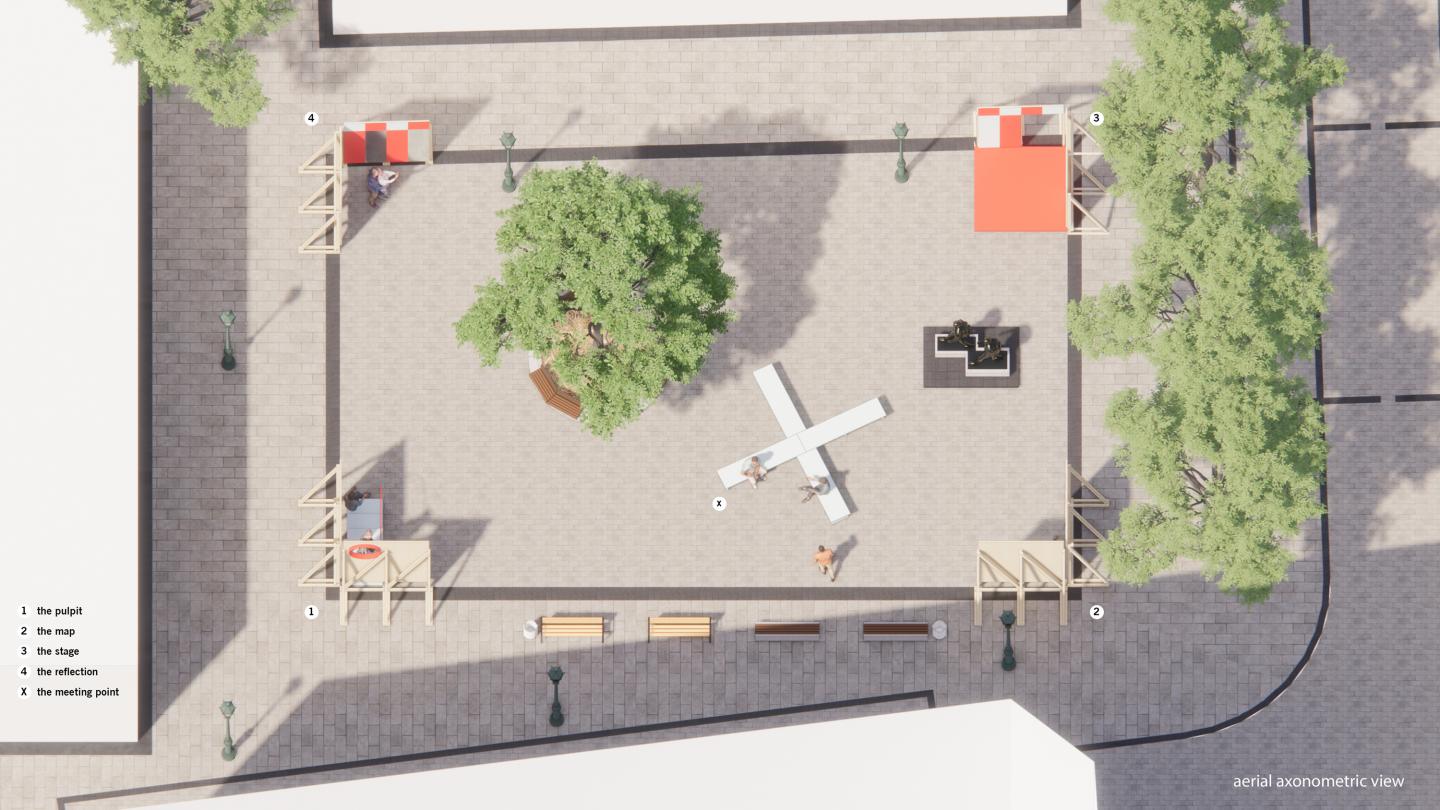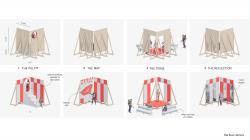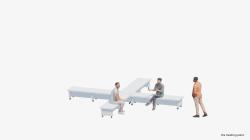las cuatro esquinas — pavilion proposal in Logroño, Spain
Welcome to las cuatro esquinas de la Plaza Escuelas Trevijano.
Plazas are usually open public areas essential for the urban fabric of a city, a place for gatherings, and it’s as much of a starting point as a destination. Taking advantage of the pavement design of this plaza, we decided to define a central room by its corners.
As you approach, you see these wooden structures defining each corner, building up anticipation to discover what their interior holds. But it’s not until you walk inside that you are able to see the playful and colorful walls. As we move through these uncertain times, we all need a place where we can find happiness.
To each corner we have attributed one potential use, giving the visitors the opportunity to explore them:
the pulpit—here one can climb the four steps and openly make their voices heard;
the map—this will hold all the information about the art circuit, allowing visitors to gather information and start their exploration;
the stage—a space for either spontaneous talks, storytelling, or informal small lectures that can be open to young artists who want to share their work;
the reflection—take a moment and you will be surprised by your own reflection almost as on a game of hide and seek;
At the center of the plaza,
you will find 4 benches on wheels that together form a cross—the meeting point—these benches can be configured in many different ways, including as the audience for the stage.
Generous proportions enable social distancing, while the embrace of these four corner structures maintain intimacy and warmth. Not only an outdoor plaza, this open room provides a space for surprise and reprieve, inviting you to learn, play and smile.
2020
The installation is composed of 16 modular parts (4 per corner) that will be shop-fabricated out of the ultralight poplar panels provided by Garnica, and quickly assembled on site.
Each module uses approximately 6 panels plus regular lumber for the structure and some extra materials for the interior finishes.
At the end of the festival, all materials can be easily recycled or, as common building materials, donated to local shops and artists for future projects.
Francisco Rocha





